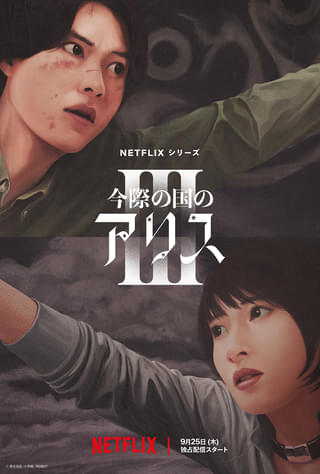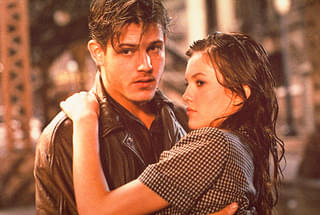コラム:パリジェンヌの東京映画レポート2 - 第6回
2010年8月13日更新

第6回:ルイ・マルの名作「死刑台のエレベーター」を50年後の日本でリメイク
Movies are telling stories but also expressing concepts. Often, those concepts are timeless, and need therefore to be re-told to be transmitted to the younger generations. Remaking a movie is therefore a way of paying tribute to the original movie, while transmitting its message to other generations.
Thus, Louis Malle’s first fiction feature movie “L’ascenseur pour l’echafaud” ( Lift To The Scaffold), which came out in 1958 will now reappear in a Japanese and modernized version under the name “Shikeidai no elevator”. Making a remake, especially the remake of a movie considered as a masterpiece of the French cinema was a challenge but also an honor for the Japanese director Akira Ogata.
How does Ogata’s “Shikeidai no elevator” retell “L’ascenseur pour l’echafaud” ‘s story?

(C) 1958 Nouvelles Editions de Films
First of all, the scenarios of both movies are really similar. Just as its original, “Shikeidai no elevator” deals with three connected plots: Julien Tavernier/Tokito trapped in the elevator near the murder scene, Florence Carala/ Meiko wandering in the streets at night searching for her lover, and a young delinquent couple escaping with a stolen car. Even though the story takes place half a century later and in another country, the differences regarding the plot are almost inexistent.
Then, one of the strong elements of the original movie was that Louis Malle humanized his intrigue and his characters through close-ups and the off-screen voice of the heroine. This way of focusing on the characters and building the plot around the feelings of the protagonists is also present in the Japanese version.
Thus, the two movies open for instance on the same scene: a close-up on the heroine who's on the phone with her lover, telling him that she loves him and urging him to finally kill her husband so they can be together…
And yet, even though those elements make the remake pretty similar to Malle’s movie, you don’t leave the theatre with the same feelings.
While Akira Ogata's shooting can indeed be compared to Malle's one, through the close-ups and the use of lights and shadows that create a special atmosphere, the transmission of some scenes is quite different and reflects how cinema has changed within 50 years. In fact, it is striking, once you saw the 50’s version of the movie, how much more aggressive and explicit the thriller is today. But can we blame Ogata for it? I don't think so. Imagine he had filmed the story like Malle did: first, wouldn’t you think "how old-fashioned!", second, is there a point in remaking a movie without adapting it to the present? I don’t think so.
I reckon that what makes out a successful remake is also that the concepts of the original movie are correctly translated into the present, with a modern shooting and staging. It has to be an original in its way.

(C) 1958 Nouvelles Editions de Films
On top of that, even though the two movie directors put the feminine protagonist in the foreground through close-ups and the off-voice, one of the biggest differences between both movie versions may nevertheless lay in this character. In fact, while Jeanne Moreau plays a fragile and romantic woman, Kichise Michiko seems to personify a strong woman and her passion for her lover is less visible, she almost seems heartless sometimes. I guess that this gives more intensity to the plot and reflects how the role of women in society has changed nowadays.
But even if Malle’s movie doesn’t have the attributes of a modern thriller you can nevertheless feel the suspense and the intensity of the happening thanks to something which is undoubtedly one of the most impressive elements of Malle’s movie: the music.
Indeed, Miles Davis, who improvised directly while viewing the movie, managed perfectly to catch the spirit of the scenes and to express it all with a jazzy soundtrack which has been highly praised and described by jazz critic Phil Johnson as “"the loneliest trumpet sound you will ever hear, and the model for sad-core music ever since. Hear it and weep". Malle's "L'ascenseur pour l'echafaud" would doubtlessly not have been the same without Miles Davis!
This may be the only regret you could have while watching Ogata’s “Lift to the Scaffold”. Because all the other differences seem necessary to make the movie adapted to our time. A Japanese remake, but above all a contemporary remake.
[抄訳]
1958年に発表されたルイ・マル監督の長編処女作「死刑台のエレベーター」が、現代の日本を舞台に置き換えて映画化されました。フランス映画の傑作として称えられている作品をリメイクするのは大変なチャレンジであると同時に、監督の緒方明にとっては名誉なことでもあったはずです。緒方監督は、この名作をいかにリメイクしたのでしょうか?

(C)2010「死刑台のエレベーター」製作委員会
まず、両方の作品のシナリオはほぼ同じでした。リメイク版は、オリジナル同様「犯罪を犯した男がエレベーターに閉じ込められる」「女が、恋人の行方を探して、夜の街をさまよう」「不良の若者カップルの逃避行」という3つのプロットが絡み合うものです。50年のときを経て、異国で作られた作品ですが、プロットに関しての違いはほとんどありません。
ルイ・マル作品でとても印象的だったのは、劇中の人間関係とキャラクターを、クローズアップとオフスクリーンの声で表現していたことです。このキャラクターに観客の気を集中させ、主人公の感情を際立たせることによってプロットを組み立てる方法は、リメイク版でも使われています。つまり、2つの映画はまったく同じオープニングシーンからは始まるのです。だからといって、両方の作品を見たあとの印象が同じになるわけではありません。
緒方監督の撮り方は、マル監督の撮り方と比べると、同じクローズアップでも雰囲気がまったく異なっていて、映画は50年でこんなにも変わったのかということを思い知らされます。実際、50年代に撮られたオリジナルは、今日のスリラーよりずっと挑戦的な作品です。だからといって、緒方監督を責めることは出来ません。もし、緒方監督がマル監督と同じように撮っていたら、多くの観客は「古くさい」と思ったはずです。それに、まったく同じやり方で撮ることにリメイクする意味などあるでしょうか? 私は映画のリメイクを成功させる秘訣は、その映画のコンセプトを現代に正確に置き換えることだと考えます。そうすれば、それはオリジナルになるはずなのです。
今回のリメイク版とオリジナル版では、同じ女性を主人公にしていながら、彼女たちのキャラクターに最大の違いがありました。オリジナル版でジャンヌ・モローが演じたフロランスはとても脆くロマンティックな女性であったのに対し、リメイク版で吉瀬美智子が演じた芽衣子は、私から見るととても強く、彼女の恋人への愛情はあまり見えず、冷酷な印象すら感じました。この違いは、今日と50年代当時の女性を取り巻く社会環境の変化をそのまま反映しているのでしょう。
また、たとえオリジナル版が現代のスリラーの特性を持っていないにもかかわらず、サスペンスと激しさを感じるのは、マイルス・デイビスの音楽があるからに違いありません。無声の映画を見ながら、即興で音楽をつけたというマイルス・デイビスは、各シーンのスピリットを完璧にとらえてました。その音楽は当然のように多方面から絶賛されました。マルのオリジナル版は、マイルスの音楽がなかったらまったくの別物だったはずです。このマイルスの音楽がなかったことが唯一残念だったリメイク版ですが、ほかの変更や差異は現代を舞台にした映画を作るためには必要不可欠でした。










